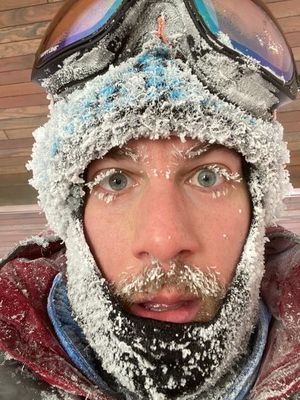As I trundled through the beautiful autumnal landscape on my trail run today, the cool breeze reminded me that winter’s chill is right around the corner. This time of year, hiking up Hope Pass under a blazing sun seems a long way off. But Leadville and the rest of our summer goal races will be here before we know it. What can we do now to help ensure that we get the most out of those highly anticipated adventures? Here are a few suggestions on how best to approach winter/off-season training.
1. Take a break. If you’ve been training steadily for an extended period of time, the winter can provide an excellent opportunity to recharge your batteries, both physically and mentally. Even the top athletes don’t enjoy training every day, and without allowing for a period of recovery between racing seasons, we can run the risk of getting stale or injured. Consider taking a period of complete rest for several weeks, and easing back into training with a more flexible schedule that allows for on-the-fly adjustments to accommodate for other life stressors. When it’s time to ramp things back up again, you will likely find that you can attack your training with renewed vigor and enthusiasm.
2. Try something new. Not up for dodging cars on plowed roads? Tired of watching reruns of The Officewhile on the treadmill? (Not me. I never get tired of reruns of The Office.) If you find yourself snowed in this winter, consider trying an aerobic alternative to running like snowshoeing, Nordic skiing, or ski mountaineering. Even novice skiers can realize enormous aerobic and strength benefits while sparing your body the pounding of hard training miles on frozen roads or trails. Not sure where to start? Many shops offer season-long gear rentals, so you can decide whether it’s something you really enjoy before making a huge financial investment. (For ski mountaineering especially, the gear is not cheap.) Check on-line for local clinics for beginners. Even if you don’t live near snow, the winter season can be a great time to branch out into a different form of exercise. Cycling, either outdoors if you’re in a temperate climate or inside on a trainer like a Zwift or Peloton, provides an excellent off-season stimulus.
3. Develop good habits. Trying to make changes to your routine can be difficult during the spring and summer, when much of the mental energy we devote to sport is consumed with specific training and race prep. If you’re aiming to improve your diet, work on your core strength, or improve your sleep habits, these can be difficult projects to tackle when we are otherwise stressed or fatigued. During the winter off-season, you ideally have a bit more bandwith to devote to general self-improvement. Now is the time to make good habits part of your routine, so that they carry over to the spring and summer, when you will begin to see real benefits in your performance. Think about adding a ten-minute strength/flexibility routine after your workout, or focus on getting eight or more hours of sleep each night. If these habits become ingrained now, it will be easier to continue them as your training load increases later on.
4. Turn your weaknesses into strengths. Training should ideally progress from general to specific. That is to say, the aspects of training most germane to your goal race should be honed in the weeks and months closest to that goal. That means now is a great time to develop the aspects of your performance that may have been neglected in the past. If your usual training focus is on mileage and long runs, spend some time now developing your speed. If you’re a great climber but struggle on the descents, work on strengthening your quads to absorb the pounding of long downhills, and practice your technique on technical descents. Taking the time now to address your relative weaknesses will make you a much more well-rounded athlete when the spring rolls around, and should lead to improved performance and enjoyment during summer racing season.

